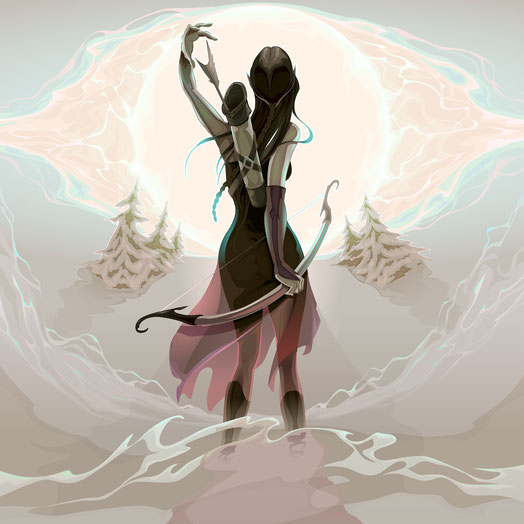How Women Are Represented In…
Those who know me, know I’m a giant Tolkien Fan. I’ve reread all his books a hundred million times; I’m not averse to quoting random bits of text, however unnecessary it seems in any given situation; and I named my cat Bilbo. When it comes to The Hobbit, though, I have to ask:
where on Middle Earth are all the women?
…The Hobbit by JRR Tolkien (1939)
An All-Male Cast
Bilbo’s a bloke, as is Gandalf and all the twelve dwarfs. Beorn’s a male. Gollum, the trolls, the orcs, every elf in Mirkwood, the Master of Laketown, Bard (a man “whose wife and child had escaped down the Running River from the ruin long ago.”)—even Smaug. Naturally, we can infer the existence of women, because none of these men would be around to have adventures in the first place if they didn’t have mums, but no woman has an active role in the story. Not even as a secondary character. Not even as an extra.
“But, Maria!” I hear you cry. “Why ever not?”
I’m glad you asked, because I have a theory about that.
A Man of His Time
Tolkien was born in 1892 and when he grew up he fought in the first world war then taught at a couple of Oxford Uni colleges from 1925 to 1959. Women weren’t seen in front-line combat during WW1, and most Oxford colleges didn’t admit women students until 1980 (what?!), so it’s fair to say that Mr T lived his life predominantly around men.
I don’t think Tolkien was sexist on purpose. It was just the culture he grew up in. Society was sexist, and that’s mirrored in The Hobbit. Yes, of course I’m going to defend the Godfather of Fantasy until the grey ships sail into the West, but you can’t place all of society’s ills on only one man’s shoulders, can you? Besides, he totes adored his wife, Edith. She was his Luthien, he was her Beren. You can’t be a sexist pig if your inspiration for an awesome female character (who was brave as all fuck—go and read about her in The Silmarillion) is your own wife. I’ll probably do another post on kick-arse Tolkien women, but today we’re just looking at The Hobbit.
Anyway, while my great mate JRR probably wasn’t sexist on purpose, nor could he be classified as a feminist writer by any stretch of the imagination. It never occurred to him that little girls would be interested in reading The Hobbit because little girls just aren’t interested in going on adventures. Only little boys want to go on adventures and thus The Hobbit was written with an all-male cast.
Belladonna Took
I can’t not mention Bilbo’s mum. She’s not a character in the tale, except as Bilbo’s backstory, but she is “remarkable” in the sense that she and her two other sisters (and five other brothers, I assume) were quite prone to upping sticks and having adventures when the fancy took them—absolutely not normal Hobbit behaviour. We’re told this so that we understand why Bilbo feels compelled to go his adventure there and back again. However, when Belladonna married Bungo Baggins, Bilbo’s dad, she stopped going on adventures. Bungo built her a luxurious hobbit hole (“partly with her money”) and made her respectable.
Typical.
But we are told that Bilbo “got something a bit queer in his make-up from the Took side, something that only waited for a chance to come out.” I think that “queer” here references how strange it is for Hobbits to seek out adventure, rather than women, and I love the fact that the Tolkmeister has made the fiery spirit of adventure a matrilineal matter rather than a patrilineal one.
Also, side note: Belladonna means simultaneously beautiful lady and is the name of a poisonous plant from the nightshade family. Beauty and danger. Socially acceptable and toxic. Make of that what you will.
21st Century Women
What I find super awesome, and which I don’t doubt some hardcore Tolkien puritans dislike, is that the Peter Jackson film versions include two key female characters in their adaptation. Galadriel makes an appearance in the films as the incredibly beautiful, incredibly feminine but terrifyingly powerful Elf Queen. But the character who really made me run around doing awesome air kicks was Tauriel. Now, she didn’t exist in the original Hobbit. She was created by Fran Walsh and Philippa Boyens, Jackson’s co-writers, because they both felt the films needed an injection of “feminine energy” for us discerning 21st-century audiences. I couldn’t agree more. And where Galadriel is majestic and ethereal, Tauriel is definitely more earthy (I reckon her name comes from the root word ‘taurë’, which means ‘forest’. Of course I know Elvish!), with some kick-ass anti-orc moves, and isn’t afraid to pursue that cross-species love affair even though elves have hated dwarfs for Mearas years.
No Women, But No Female Archetypes, Either
This is why I can forgive dear John his all-male cast—he may have left out 50% of the population, but better that than the dreadful female archetypes that crop up in every single fairy tale ever. Plus, I quite like the fact that, because there are no women in the books, no violence is perpetrated against women. There are male goodies, male baddies, male monsters, and lots of violence perpetrated by all these said males against other males. I’m not saying I condone violence against men, not in the slightest; it’s just nice that we womenfolk get to have a little bit of a break from it in The Hobbit.
(Except when Smaug obliterates Lake Town, where women and children undoubtedly live, but I’ve intentionally left that out for the purposes of my argument.)
Conclusion: read The Hobbit. It’s flipping awesome.

